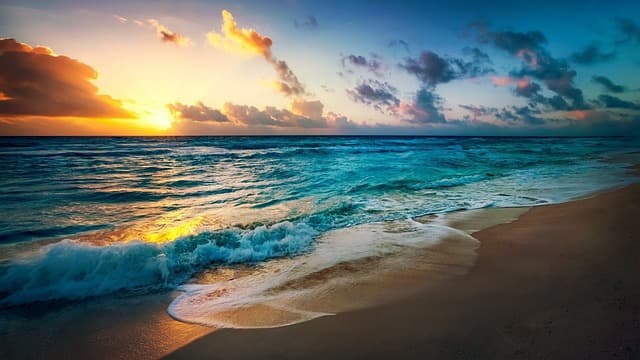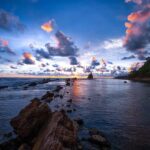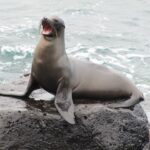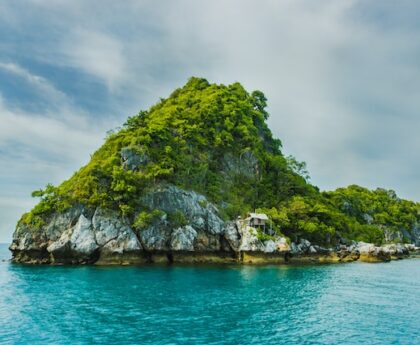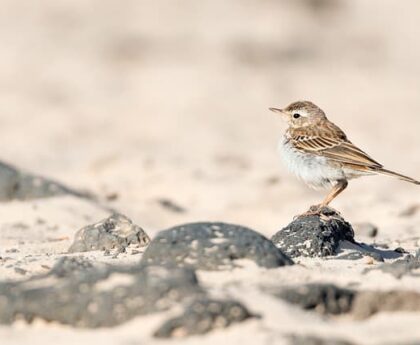Bora Bora is a romantic and one of the most beautiful islands in the Pacific Ocean, located near the capital island of French Polynesia, Tahiti. It has everything – mountains, magnificent beaches, hot tropical sun and modern infrastructure for recreation.
History of Bora Bora
Bora Bora is a picturesque tropical island that is 9 kilometers long and half as wide. Its natural architect is the lava of a long-extinct volcano, coral reefs and sand. The crater, washed out by water, has formed a sea bowl, fenced off from the main ocean currents. It is always filled with clean, clear and warm water. Nature has created her masterpiece here, gifted the island with the natural wealth of the ocean and the healing sea air. There are many interesting places here, and the most majestic of them – towering at 727 meters Otemanu Peak in the heart of Bora Bora.
An uninhabited land. The island remained uninhabited for a long time. It was a wild, uninhabited wilderness. Not before 400-450, the Polynesians, the original inhabitants of the Pacific Islands, came here by boat and began colonization. Discovery for Europe. The first European to discover Bora Bora for the Old World, though he mistakenly thought the land was Chinese, was James Cook. He sailed nearby in 1769. There is an alternative version about the British discoverer Samuel Wallis. Colonization. In 1786, the French colonized the island, declaring it part of island France. Kingdom of Bora Bora. In the early 19th century, Bora Bora and several surrounding islands united to form their own independent kingdom of Bora Bora. But in 1888, France sent its troops here and overthrew the local monarchy. World War II period. During World War II, the island became a strong base for the U.S. Navy. It housed an air base and fuel supplies to repel attacks from Japan. But during the war period, Bora Bora fortunately did not become a battleground. Our days. After the war, the island remains part of the French possession of Polynesia. Today, Bora Bora has its own municipality. The local government considers the island’s largest city, Waitape, the unofficial capital.
Today, Bora Bora is one of the most popular resorts in the world
Population and language in Bora Bora
The island is inhabited by just over 10 thousand permanent residents. The rest are tourists or temporary workers. The bulk of the islanders – Polynesians, but there are also the Chinese, mestizos, representatives of other nationalities. The main language is French, but Tahitian is also widely used. Both languages have the same official status. Speak English comfortably in hotels or points of service – stores, places of recreation and entertainment, the airport. If you dive into the hinterland of the island’s capital, you may not understand everything from the speech of the locals. Even good French may not help every time, because here it is generously diluted with Tahitian.
Religion and culture
55% of the islanders are Protestants. Almost a third are Catholics. There are supporters of Mormons, Adventists, Buddhists, and Confucianism.
Tahitian culture is an original blend of the ancient beliefs and mystical knowledge of the ancestors of the Polynesians, the Maohi, and the French cultural traditions. It combines the spirit of the ancient gods and the purity of nature with the sophistication of one of the oldest European civilizations. That is why the Tahitian culture is unusual and distinctive.
The omnipresent mystery of Mana
The ancient Polynesians revered the power of Mana, a supernatural ability that manifests itself in a chosen few, those who come or live on the island and receive this power from nature. Mana is the omnipresent mystery that binds all living things and that which has gone before. It can be aimed at gaining power, success, victory, wisdom, acquiring the gift of well-being and peacefulness. The island may offer to immerse yourself in the search for your Mana, but it will require complete detachment and a strong work on yourself.
Polynesian Tattoos
One of the most famous manifestations of Polynesian culture in the world is tattoos. The word “tattoo” itself is an indigenous word of the islanders. Tattoos are a special art that reflects life and special, important moments in the life of an islander. Here they are made by the best masters in the world, knowing the theory and practice.
Javelin Throwing and Surfing Like a King
Tahitians keep their legends and remember the traditions of their ancestors. This is not manifested equally everywhere, but especially interesting are the festivals and special performances organized by the keepers of island culture. Javelin throwing was revered by the ancient islanders as an activity equated to a divine manifestation of strength, agility and marksmanship. Bora Bora’s kings and chiefs preferred to prove their worth to the community and their strength through the art of surfing, and male warriors competed in canoe races and rock lifting.
Mobile Communications, Internet, Television
Cell phone and internet services on the island are provided by VINI, which has a monopoly in all of French Polynesia. On the company’s website, you can see a list of mobile operators who cooperate with the company and provide roaming without changing SIM cards. The list includes almost all countries in Europe and other continents with guaranteed 2G and 3G connectivity (with some exceptions). The same company provides Internet connection and purchase of TV broadcasting access. There are no problems with communication even in remote corners of the island. If there is a need to change the SIM card, it can be purchased at stores and retail outlets around the island.
Shopping
The best things you can take home with you from the local stores and boutiques are handmade and high quality pearl jewelry. They are mined here in the wild. The jewelry is sold in specialized stores and departments.
Documents for crossing the border
Visitors pass through customs and passport control at Faa’a International Airport. Bora Bora is part of French Polynesia, so there are special rules of border crossing and residence of citizens of other countries. They differ from the established rules in France.
Visa-free. Citizens of the European Union and the European Economic Area, as well as Switzerland, Andorra, San Marino and the Vatican may enter Bora Bora without a visa. A passport is sufficient for border crossing.
Visa. If a visa is required, it must be obtained in advance through the French Embassy, indicating specifically to visit French Polynesia. The list of documents is standard and includes besides the national passport and documents confirming the purpose of the trip, tickets, hotel reservation, photos of the applicant. Details on the conditions for submission of documents preferably in the consulate or embassy of France.
Citizens who have a residence permit or long-term visa of Schengen countries need a passport and the visa itself, or a residence permit (original). If it is a question of entry from another country that is not on the lists listed above, you will need:
- A national passport;
- documents confirming the purpose of the visit;
- Money sufficient for the stay;
- documents confirming the possibility of returning home – return ticket, insurance and other guarantees.
Bora Bora infrastructure
The epicenter of tourist and administrative, commercial life is the village of Waitape. It is located on the west of the island – opposite the largest cut-through channel into the volcanic lagoon of Bora Bora. Nearly half of the island’s population lives in Waitapa. There are supermarkets and stores selling souvenirs, various necessities and pearls.
Choosing a Hotel in Bora Bora
The tourist island is equipped with comfortable hotels for all tastes and wallets. You can spend a luxurious vacation in an overwater bungalow resort Conrad Bora Bora Nui, or no less comfortable 4-star Sofitel Bora Bora Marara.
Holidays in Bora Bora: Seasonal considerations
Bora Bora is in a tropical climate. Temperatures are virtually unchanged year-round and remain at 28-32°C. The water is 27-29°C year-round. There are only two seasons in Bora Bora – winter and summer. Winter provides a season with high temperatures and no heavy rains. Summer is a warm season with long periods of rainfall:
rainy season – November-March;
dry winter – April-October.
The driest period without tropical downpours in Bora Bora: June through October.
Dress for the weather
Bora Bora is characterized by a consistency in weather and temperature. And if the trip is planned for the dry season, then it makes no sense to take warm clothes with you on the road. But do not forget that the stores in Bora Bora are designed for tourists and their prices are quite high.
April-October – lightweight shoes that open your feet.
November-March – more humid period. You will need a closed or not soaking second pair.
If trips to the mountains are planned – then take sneakers with a good, thick sole. Do not forget that the soil of the island is a solid volcanic rock. During the rainy season, it’s best to take a waterproof jacket or a compact raincoat on your trip. As a rule, the sand on the beaches is fine and pleasant to the touch. But if you make a swim to the coral reef – it’s better to stock up on special shoes to protect your feet from broken coral.
Transportation on the island
Motu Mute Airport. The inland island airport Motu Mute (international coding – NTTB) has the designation in the directories – Motu Mute/Bora Bora. It accepts only aircraft from the international airport of Faaa (flight time – about 50 minutes). The airport is built on a Motu island separated from the main island, and to get to Waitape you can use the free boats of Air Tahiti. The duration of the trip is about 20 minutes. The frequency of flights is every 20 minutes after the plane lands. Major hotel resorts offer their own shuttle service. Port and ferry Aremiti. To travel to the island by sea, you can take the Aremiti ferry. It runs between several islands. You can also put your car on it. Ticket for one passenger costs from 1500 to 950 Pacific francs. For children under 2 years – the trip is free. Students can also travel on the ferry for free, but only with a supporting document and if they are not more than 26 years. You can buy tickets online or at special terminals in Papeete in Tahiti. The ferry terminal is a 10-minute drive from Faa’a International Airport. Cabs. Bora Bora is a small island and is bordered by a good paved road. It can be reached by car in 30-45 minutes. A bicycle or scooter can take 1-2 hours. There are also local cab services and private transfers. If you need a transfer, you can order one directly from the hotel. The cab will come and take you to the right place. You can also order it yourself. Bus. The bus runs at intervals of 1-1,5 hours on the ring road of the island. This is the only public transportation in Bora Bora.
Beaches and Activities in Bora Bora
The island has several great beaches with clean sand and clear water. Some of the most popular spots include the open public beach at Matira Point on the southern tip, the private beaches of the Pearl Beach Resort & Spa Bora Bora Bora and the Four Seasons Resort Bora Bora Bora on the reef islets at the northern end.
In addition to relaxing on the chic beaches, the island’s resorts offer a wide range of activities:
Diving. Bora Bora is a great place for diving. For experienced divers and those who go on a boat trip with a trainer, underwater safaris are organized. You can also watch whales, sea turtles, giant stingrays and other inhabitants of the Pacific waters. There are certified scuba trainers on the island and places to buy or rent equipment. The main dive sites are on the coral lagoon line and the open sea. Shark feeding. Dangerous, at first glance, kind of entertainment. The sharks approach the boat, but some of them stay away. This type of interaction with marine predators is practiced in the shallow waters of the lagoon and is recommended for those who want a thrill. Fishing. Ocean fishing does not compare to conventional fishing. Everything is different here: the undulating sea, the freshness of the salty sea wind and magnificent scenery. Kayaking and canoeing. The traditional occupation of Polynesians is canoeing. Whoever can learn how to sail these endurance and most simple boats, can safely classify themselves as a conqueror of the Pacific Ocean. Kitesurfing. This type of surfing is popular at the most famous beach on the island – Matira Point. Parasailing. There are professionals on the island who will help you soar over the sea with a boat and a parachute. Parasailing will give you stunning views of the Bora Bora lagoon from above. Boat rides, boat trips. There are many suggestions for hiking around Bora Bora or for boat trips to other islands, to the high seas by boat or by boat.
What to visit in Bora Bora
There can be many options. The island has a lot to see and something to diversify your vacation. You can read more about local attractions here. As for the most popular places:
Galleries. The culture of the island is also filled with the colors of modern art. Among the places to visit are Bora Art Upstairs, Kincaid Galleries and artist Alan Despert’s gallery. The Maritime Museum (Musee De Marine) is a collection of models of sailing ships and boats created by French craftsman Bertrand Darras. Of architecture, the Catholic Church of Saint Pierre-Celestin in Waitapa is a luminous temple right at the foot of the mountain.
Festivals
The biggest festival, Heiva Nui, takes place on the island in July and August. It is the largest and most colorful event that brings together vocalists, dancers, and athletes. The festival is built on authentic Polynesian culture and shows the richness of ancient crafts and everyday life. Here you can buy unique handmade souvenirs. But do not forget that the festival attracts a lot of tourists and hotel accommodation should be taken care of in advance.
Another festival is Bora Bora Liquid. It is held in December and lasts four days. This festival is dedicated to water and everything associated with it. There are spectacular canoe races, relay races, films about the island and concerts dedicated to the festival theme.
Bora Bora Turtle Center
There’s a unique place on the island that can’t be found anywhere else on the planet. The Bora Bora Turtle Center is a center for rescuing, studying and communicating with the turtles of Polynesia. Scientists and staff are not only engaged in the treatment and development of the sea turtle population, but also study the life of coral reefs, the entire ecosystem of Bora Bora. There is also a museum and a large aquarium.
Excursions
Excursions and tours in the resort of Bora Bora has a special place. Holidays will be filled with vivid impressions. Among the most memorable activities on the island:
Safari Tours. An artillery battery of legendary large-caliber American guns at the World War II pier, twists and turns as if drawn by nature, mountain cliffs and lush tropical vegetation – all this can be seen during a jeep tour of Bora Bora. Helicopter Tours. From a bird’s eye view the beauty of the island becomes more expressive. Cruise around the island on a yacht. During the romantic voyage offer to taste local and European cuisine, and meet the sunrise or sunset under the gentle surf of the ocean waves.
This is important. The jungle is dangerous. Only the coastal part of the island is inhabited and inhabited. Trying to explore the tropical jungles of Bora Bora or climbing the slopes of Otemanu by yourself may turn into a hike with unpredictable consequences. The jungle is full of dangers, including poisonous plants and features known only to local guides.
Cuisine
Bora Bora’s traditional and national cafes and restaurants offer delicious local seafood in an assortment. A popular gourmet dish for tourists is roisson cru or raw tuna marinated in lime juice and coconut milk. Tropical pineapples, coconuts, and bananas grown on local islands are fresh and rich in flavor. Gourmets consider them the best in the world. Restaurants on the island also have menus of European, American, and Japanese cuisine. A special place for a meal is the coral banks, where you can spend an unforgettable picnic. There they prepare the most delicious dishes of local cuisines.
About the local peculiarities
Divine Flower. If you are offered the gift of a gardenia on the island, a white or pinkish, delicate flower, you should definitely accept the gift and give thanks for it. Gardenia taitensis is a symbol of island Polynesian culture. In local mythology, it has a special place and is considered a divine gift that the gods brought the most perfect in spirit, people. That is why you can often find ornaments or symbols made in the image of a flower on the islands.
There is no reason to worry! The islanders live by the principle of “aita pea pea”. Translated, this sounds like “no reason to worry. The local people do not believe in the material problems and values of the modern world. They are unhurried and carefree, appreciating life here and now, although they are emotional and have a great sense of nature.
